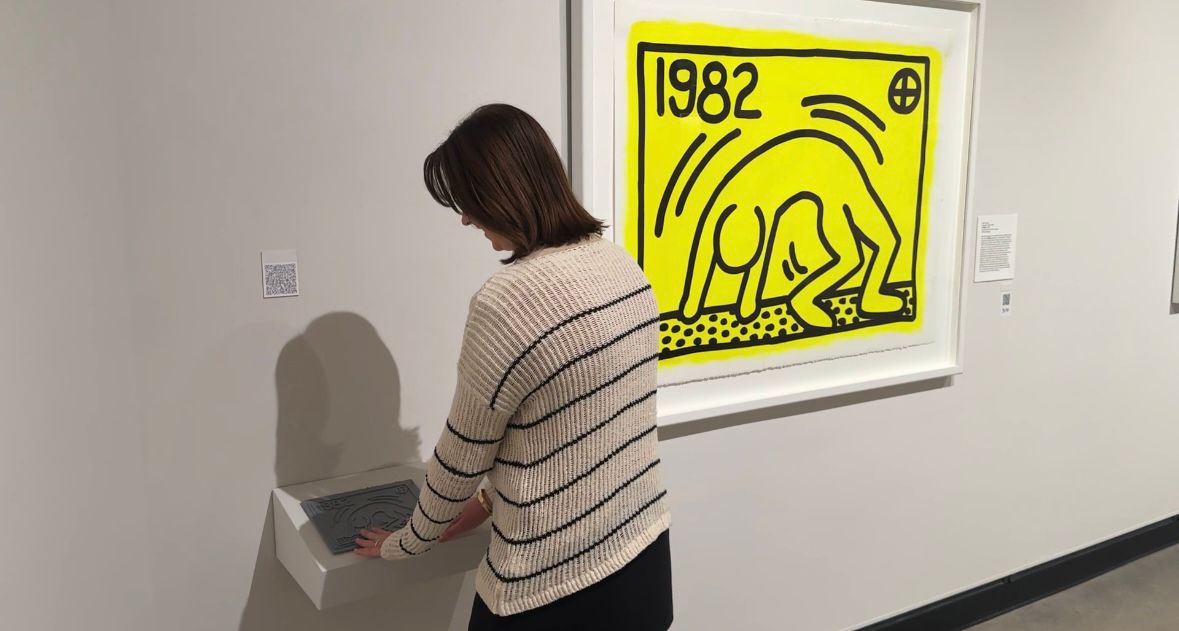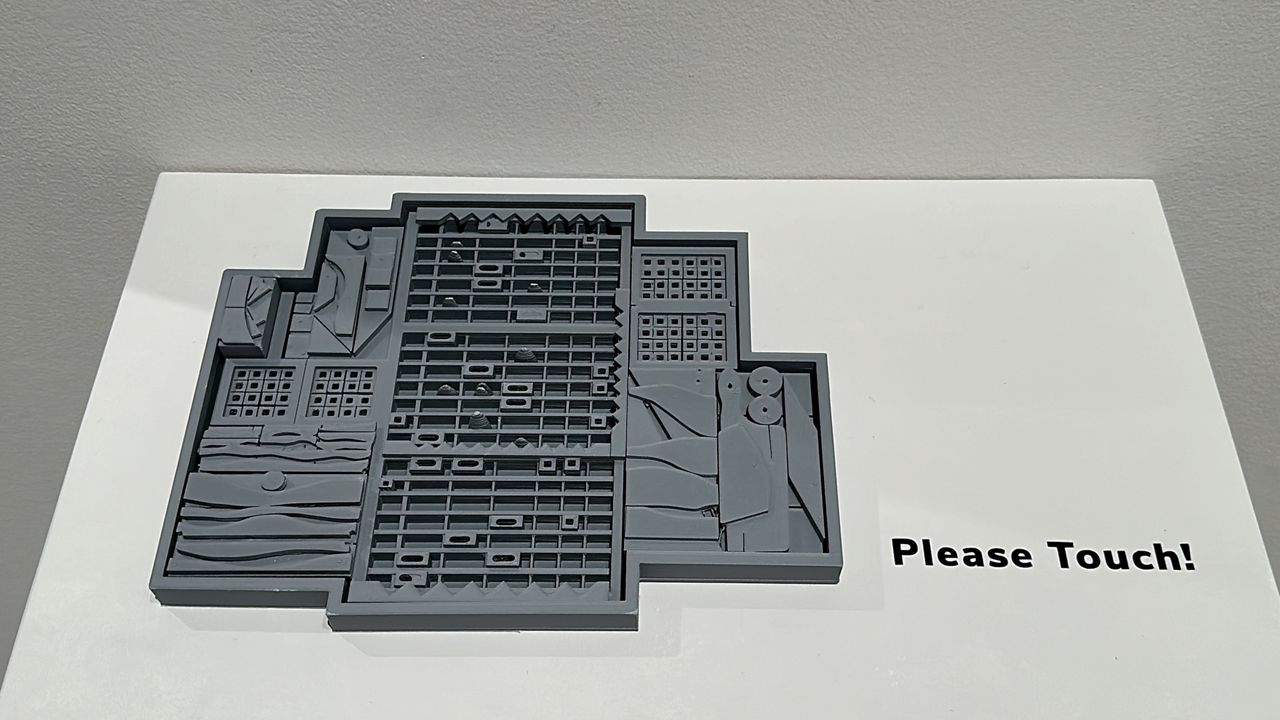WNSTON-SALEM, N.C. — Wake Forest University's "Of the Times" exhibit offers visitors a unique opportunity to interact with art.
What You Need To Know
- The "Of the Times" gallery pieces are selected by Wake Forest students every four years
- The students travel to New York City to purchase pieces that represent social and political issues representative of the time
- It's ADA-friendly with 3D tactile pieces, warning studs, audio and visual descriptions of the works and more
- It's free to the public and open until the end of March
The gallery features pieces chosen by students on the collections acquisitions committee who are selected to partake in a course that allows them to travel to New York City to buy pieces to bring back to the school.
Professor John Curley is a professor of art history who is teaching contemporary art history at Wake Forest. His course guides students through the buying process.

“It’s the only program that’s really tied into curriculum in such a way, and also that a lot of institutions do have museums. So, you know, they'll present that one photograph to a board of trustees. But I always say, like our students are, you know, curator, director and board of trustees, all in one,” Jennifer Finkel, Wake Forest curator of collections, said.
This program started in 1963, when dean Mark Reece had an idea for an art-buying trip. Not only was this a once-in-a-lifetime opportunity for students, it helped create the art program at the school.
“Students take the responsibility of this program extremely seriously. And so I think that idea of like, being a trustee, curator and collector all in one, and this idea of having that responsibility and we had students going on to careers in the art world, whether it's at Sotheby's or in galleries or museums or as you know, as curators, but also other folks, you know, go on to other careers and, you know, advertising or, you know, or law school or those sort of things,” Curley said.
Every four years, the students in the program are given a $100,000 budget for their trip to New York to bring back artwork that is representative of the times that is then spread across the campus.
Georgia-Kathryn Duncan is one of the students who will be going on the trip during Spring Break to purchase the art.
“I thought that this program is something bigger than myself. It's adding interdisciplinary dialog to the Wake Forest community, and that's something that's a really big responsibility,” Duncan said.
She is a junior at the university studying art history.
“As a female wanting to go into the art world when I graduate, it's very empowering to see women in art spaces,” Duncan said.
She and fellow classmates have decided to bring back pieces with themes of feminism, sexuality and displacement during this year's trip to represent the hot topics that have been impacting the globe.
“We are really making sure that we're focused on buying artworks from people that are queer, BIPOC, female, identifying nonbinary and Indigenous artists, that people that are less represented in our previously existing collection, because that's really important for our students here on campus to feel seen, heard, known within the artworks and artist biographies that we're having here,” Duncan said.
The artwork is placed around campus to help spark conversations over the deeper meanings of the pieces on social and political conversations.
“I want them to know that artwork is something that everyone can experience and draw something from, even though you don't have to have like a scholarly background to be able to enjoy art,” Duncan said.
The exhibit is free and open to the public at the Hanes Gallery on campus through March 31.
This year, the gallery is more accessible than ever, with new features aiding guests who are visually impaired to experience and feel the art.
When Duncan took a study abroad trip to Venice, she noticed 3D tactile pieces at the Peggy Guggenheim Collection, helping those with impairments enjoy the art and decided to make similar pieces in a 3D printer at the Wakerspace on campus.

“It's really amazing to know that, like, more people than ever can experience our collection because art can be thought of as only a viewing experience, but it's really much more than that. Having these 3D tactile models is expanding it to blind and visually impaired community members, and it's really just special to know that the university art collections was able to really listen to my ideas and help me bring them to life,” Duncan said.
Keith Haring’s "Untitled" from 1982 and Louise Nevelson’s "Night Zag III" from 1973 both have 3D tactile pieces for guests to feel.
Jennifer Finkel is a curator of university's art collection and says this one is the most accessible ever.
“There's 37 artworks in a gallery. Every single artwork has an image description, both audio and the transcript has a text script, so that if someone has low vision, ... you can still experience the artwork through a visual description," Finkel said.
Art pieces have warning strips and locator bars surrounding them along with QR codes that work with the Bloomberg Connects app, which has self-guided tours and textual depiction of the art.
The gallery that is completely selected by the students will begin to grow even faster, Finkel says.
“Starting next semester, we've accelerated it to every three years,” Finkel said.
Some of artists featured include Jasper Johns, Shirin Neshat, Alex Katz, Salman Toor, Martine Gutierrez and Pablo Picasso.








